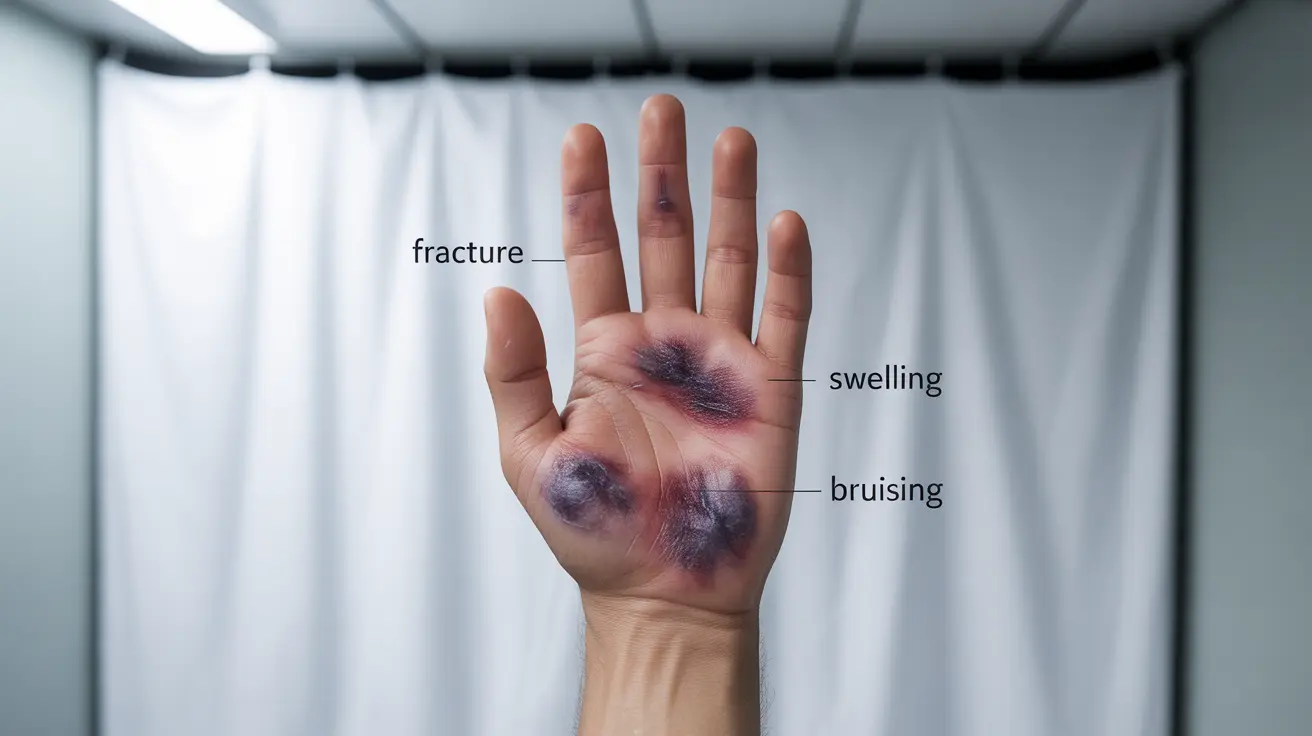When you fall and instinctively catch yourself with an outstretched hand, the impact can result in various injuries to your hand, wrist, and arm. Understanding the signs, proper diagnosis, and treatment options for hand injuries from falls is crucial for optimal recovery and preventing long-term complications.
This comprehensive guide will explore everything you need to know about hand injuries caused by falls, including common symptoms, diagnostic procedures, treatment approaches, and prevention strategies.
Common Symptoms of Hand Injuries from Falls
Hand injuries from falls can manifest in several ways, depending on the impact force and angle. Common symptoms include:
- Immediate pain and tenderness
- Swelling around the affected area
- Bruising or discoloration
- Reduced range of motion
- Difficulty gripping objects
- Visible deformity in severe cases
- Numbness or tingling sensations
Diagnostic Process and Imaging
Healthcare providers use a systematic approach to diagnose hand injuries from falls. The evaluation typically begins with a physical examination and detailed discussion of how the injury occurred.
Common Diagnostic Tests
Depending on the severity of symptoms, your doctor may recommend:
- X-rays to identify bone fractures
- MRI scans for soft tissue damage assessment
- CT scans for complex injuries
- Ultrasound to evaluate tendons and ligaments
Treatment Options and Approaches
Treatment for hand injuries from falls varies based on the type and severity of the injury. Common treatment methods include:
Conservative Treatment
For minor to moderate injuries:
- Rest and activity modification
- Ice therapy for swelling reduction
- Compression wraps or splints
- Over-the-counter pain medication
- Hand therapy exercises
Medical Interventions
More severe injuries may require:
- Casting or immobilization
- Prescription pain management
- Surgical repair for fractures or torn ligaments
- Professional physical therapy
- Occupational therapy for functional recovery
Recovery Timeline and Expectations
Recovery from a hand injury due to a fall can vary significantly depending on the injury's severity and the treatment approach. Minor sprains may heal within a few weeks, while more serious injuries requiring surgery could take several months for full recovery.
Recovery Milestones
Typical recovery progression includes:
- Initial healing phase (1-2 weeks)
- Gradual return of movement (2-6 weeks)
- Strength rebuilding (4-12 weeks)
- Return to normal activities (varies by case)
Prevention Strategies
While not all falls can be prevented, certain measures can help reduce the risk of hand injuries:
- Maintaining good balance through regular exercise
- Using proper protective gear during sports
- Ensuring adequate lighting in living spaces
- Removing trip hazards from your environment
- Learning proper falling techniques
Frequently Asked Questions
What are the common symptoms of a hand injury caused by a fall onto an outstretched hand (FOOSH)?
Common symptoms include immediate pain, swelling, bruising, reduced range of motion, and difficulty gripping objects. Some people may also experience numbness, tingling, or visible deformity in severe cases.
How is a hand injury from a fall diagnosed and what imaging tests are usually needed?
Diagnosis typically begins with a physical examination and medical history review. Imaging tests such as X-rays, MRI scans, CT scans, or ultrasounds may be ordered depending on the suspected type and severity of injury.
What are the typical treatment options for a hand injury resulting from a FOOSH fall?
Treatment options range from conservative approaches like rest, ice, compression, and elevation (RICE) to more intensive interventions such as casting, surgery, and rehabilitation therapy. The specific treatment plan depends on the injury's severity.
How long does it generally take to recover from a hand injury caused by falling on an outstretched hand?
Recovery time varies significantly based on injury severity and treatment approach. Minor injuries may heal within a few weeks, while more serious injuries requiring surgery could take several months for full recovery.
What steps can I take to prevent hand injuries when falling or during activities with a risk of falling?
Prevention strategies include maintaining good balance through exercise, using appropriate protective gear during activities, ensuring well-lit environments, removing trip hazards, and learning proper falling techniques to minimize injury risk.




